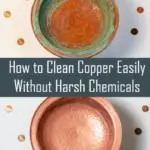Copper is a friendly metal, isn’t it?
It has such a beautiful, warm glow and charm to it. I mean, come on, it’s even one of Julie Andrews’s favorite things – bright copper kettles.
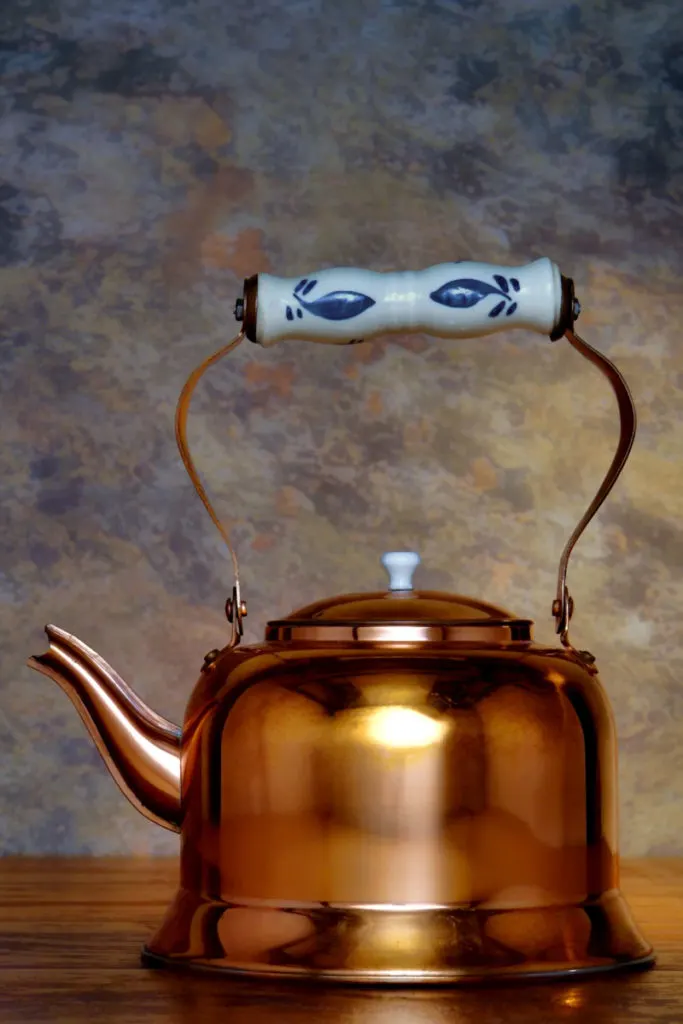
The image of a bright copper kettle feels homey and welcoming.
Now you need to grow a tea garden so you can blend your own herbal teas too.
But what if your copper isn’t so shiny these days. What if those well-loved pots and pans and that much-sung about kettle are rather tarnished?
There’s no need to break out the harsh chemicals.
We’ll get them spiffed up and shining again with a few items floating around your pantry and a touch of elbow grease. If you’re low on elbow grease, I’ve got the easiest copper cleaning secret for you. (It’s crazy, you’re going to be amazed when you try it.)
A few things you should know about copper before we begin. Copper is an exceptionally soft metal, and it will scratch easily. Never use abrasive cleaners or scrubbers on it. Even the blue scrubbers that are designed to be gentle can scratch unlacquered copper.
If you need to ‘scrub’ copper cut a lemon in half and sprinkle the cut side liberally with salt and use this to scrub it.
If you’ve found a neat vintage piece that you plan on cleaning, know that if the tarnish is very dark, you may not be able to return the copper to its original color.
And that’s okay; copper has a gorgeous patina as it ages, which is just as charming as that lovely warm orange it started with.
Sealants and Coatings
Some pieces are sealed in lacquer to make the copper a bit more durable and resist tarnishing. If you use vinegar, lemon juice, or another acid to clean the piece, it may remove or damage this coating.
How to tell if my copper is sealed
If your copper is shiny and gets dusty, rather than darker in color, your piece is lacquered. Unlacquered copper has a soft, warm glow to it and will darken as it ages.
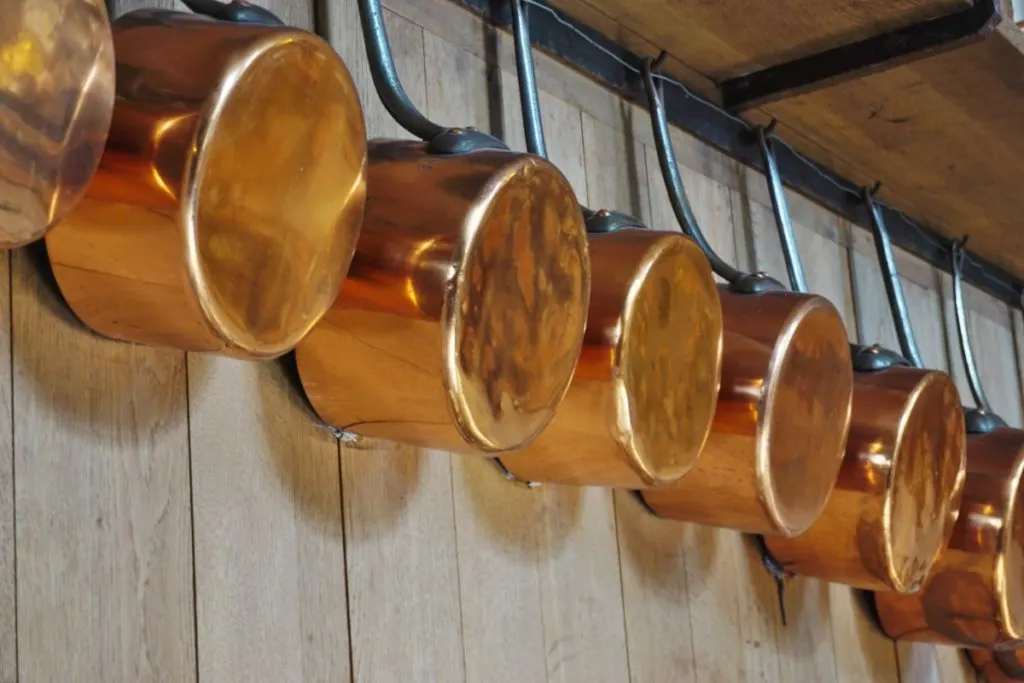
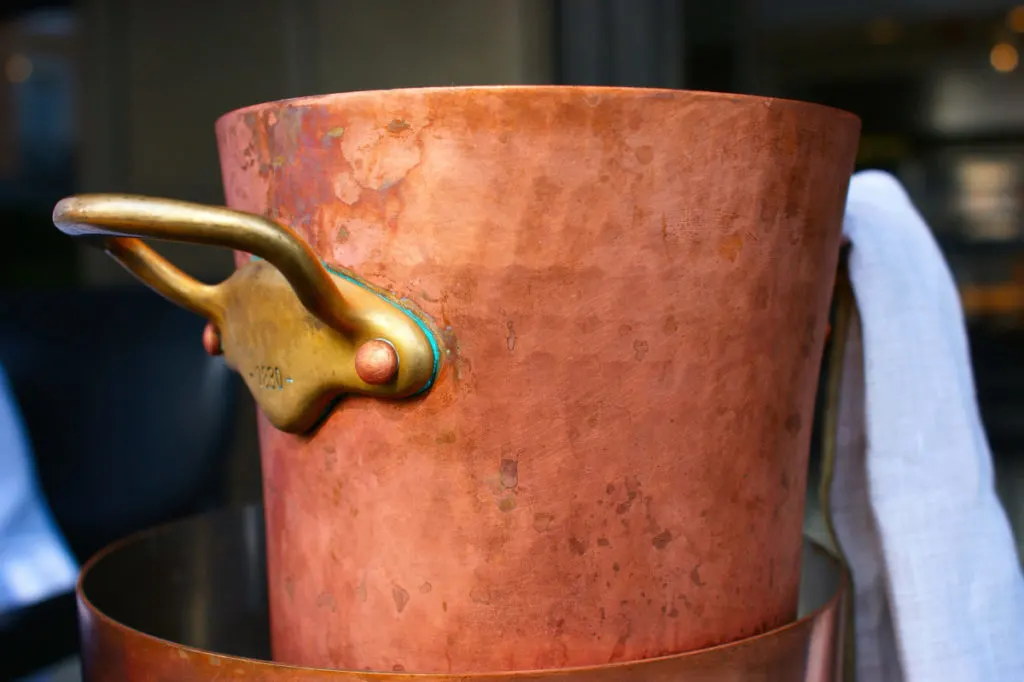
The good news is that lacquered copper only requires soap and water and a gentle sponge to bring back its sheen.
If you have unsealed copper, keep reading, and we’ll bring back that warm glow.
White Vinegar and Salt
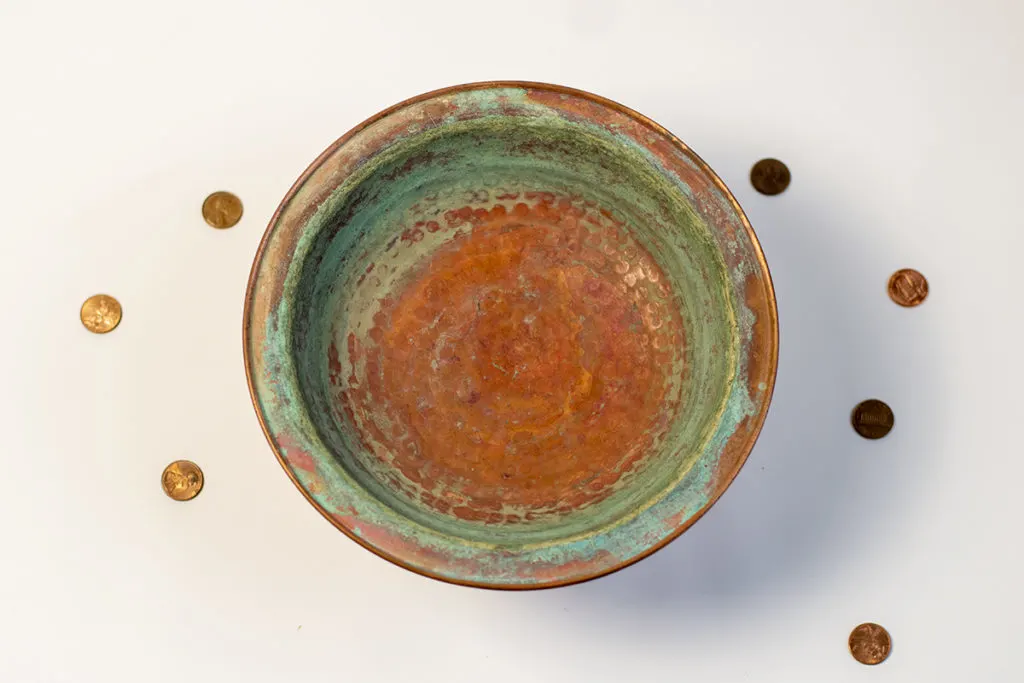
This is the quickest and often the most effective way to clean copper.
Mix 3 cups of water: 1 cup of vinegar: 1 tablespoon of salt in a pan. Bring the mixture to a boil and add your copper piece. Let it boil for around 60 seconds; this should be more than enough to dislodge the gunk and grime off it.
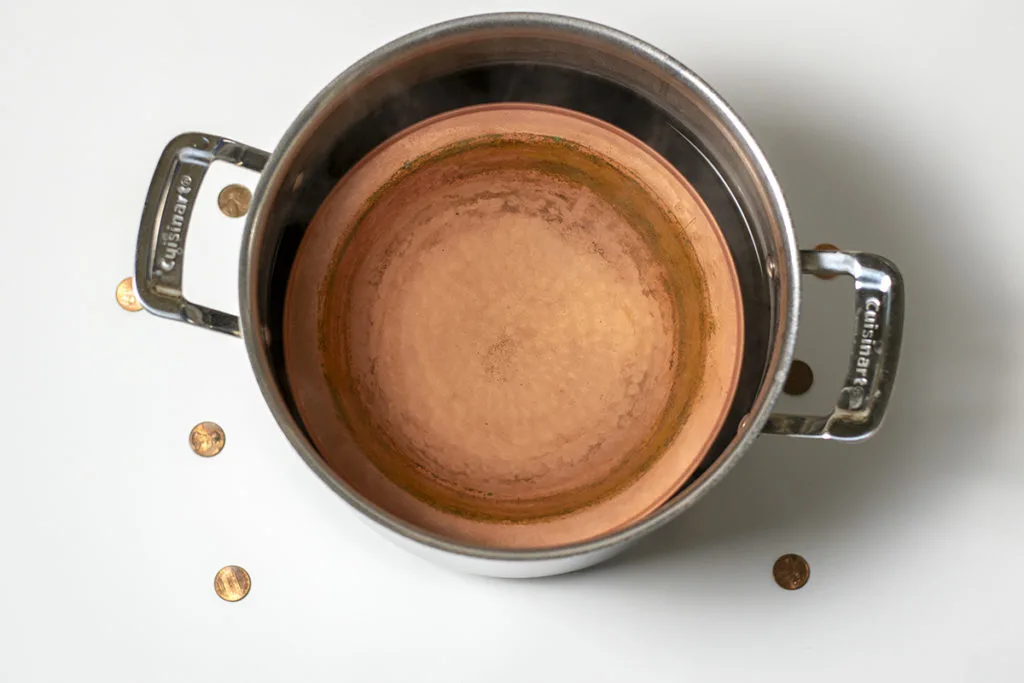
Remove the piece and rinse it off. If it still needs a little more work, you can hit it with the salted lemon and a soft cloth.
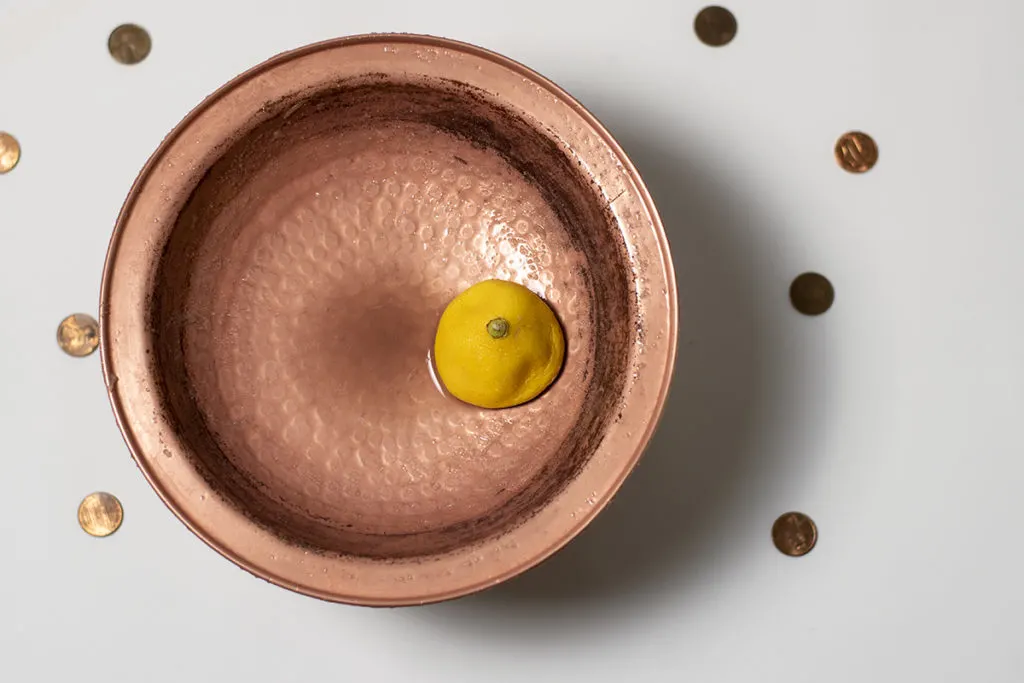
Likewise, if your piece is too big to be boiled, mix one cup of vinegar, and one tablespoon of salt, then dip the copper piece into the mixture. Turn it frequently to cover the whole piece. After the piece has soaked and the tarnish is removed, rinse and dry your piece.
Once your copper is as clean as you like (or as clean as it’s going to get), buff it with a chamois or flannel.
Here’s the before and after side-by-side…
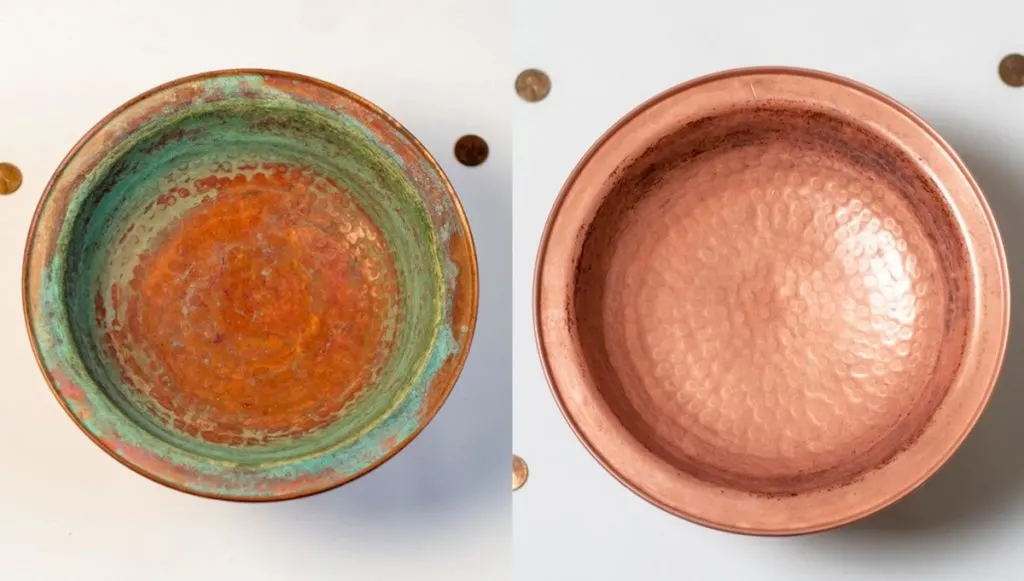
Would You Like Ketchup With That?
One of my favorite ways of cleaning copper is also the easiest. All you need is ketchup. Yup, you read that correctly. We’ve used acid to remove the oxidation from the copper with the previous method.
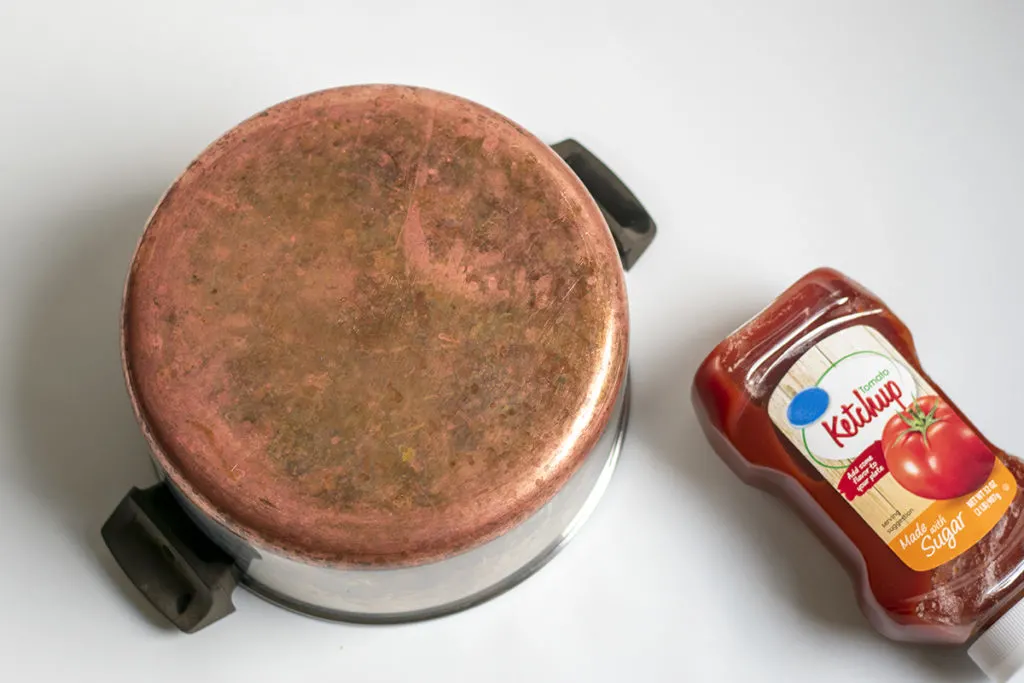
And as anyone who has ever made ketchup will tell you, it contains vinegar – exactly what we need to remove the oxidative tarnish.
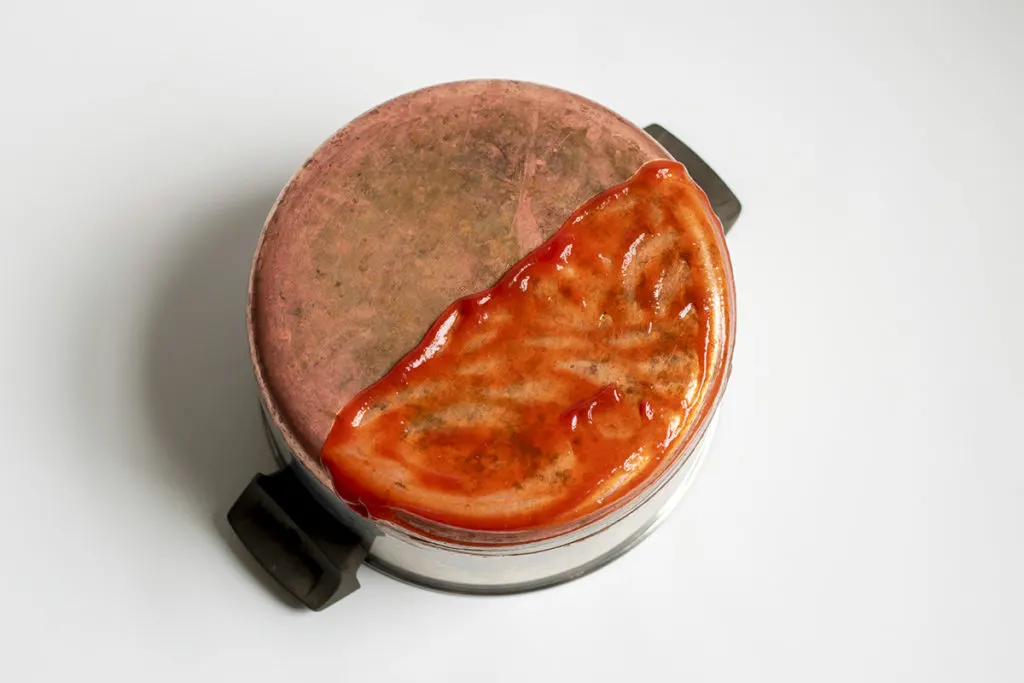
The great thing about using ketchup is it’s a paste. You can easily coat the piece you want to clean and let it sit. The vinegar does all the work for you; let the piece sit for half an hour or longer.
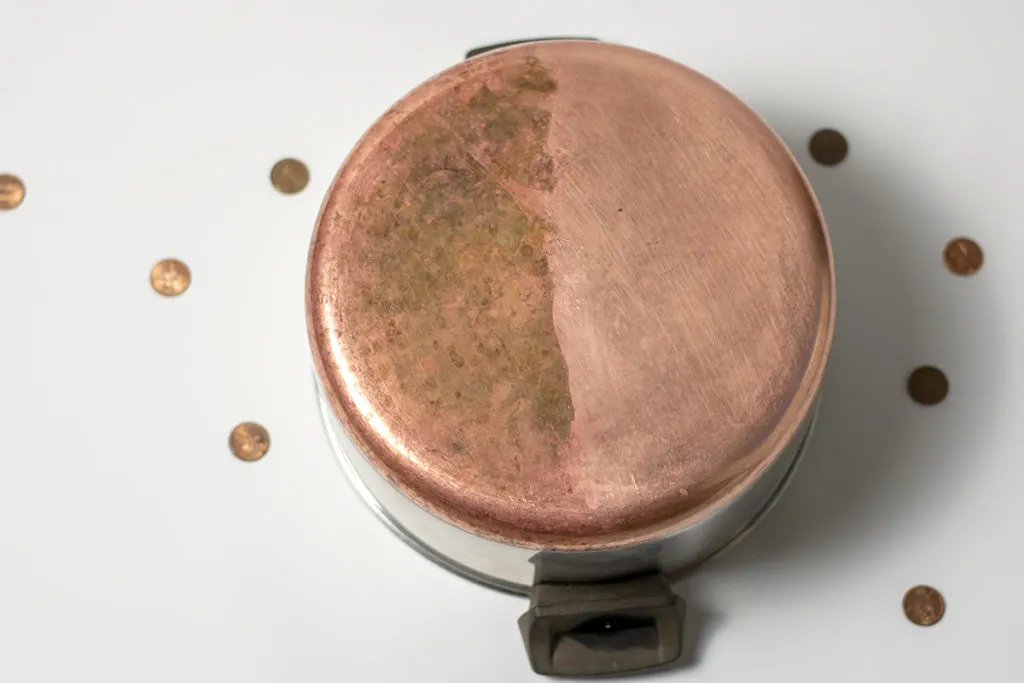
My mom taught me to do this as a kid.
When she gave me the chore of polishing the copper-bottomed pots, I would draw smiley faces or short words in ketchup on the bottom, and leave the rest of the pan unpolished. Needless to say, she didn’t find it funny when she looked at the bottom of her favorite pot and saw the word “Poop” in bright shiny copper.
Well, I thought it was funny.
Keeping Your Copper Shiny
The thing to keep in mind about copper is that it oxidizes quickly, so after you’ve got it nice and shiny, it won’t stay that way for long.
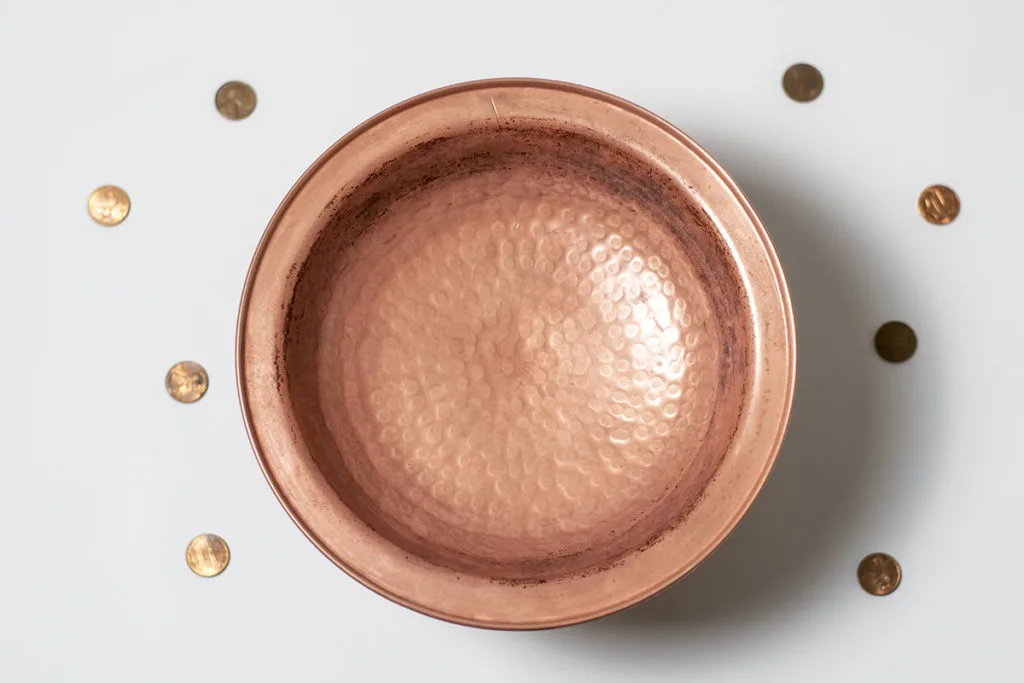
For pieces you want to display but don’t want to have to clean regularly, a thin coating of linseed oil or carnauba wax will do wonders to protect the metal from the oxidizing effects of air.
When it comes to fine copper cookware, I suggest you avoid all coatings and simply learn to accept the nature of the beast. A little patina gives it character anyway. Or you can teach your kiddos how to clean copper with ketchup and see what interesting things show up on your pots and pans.
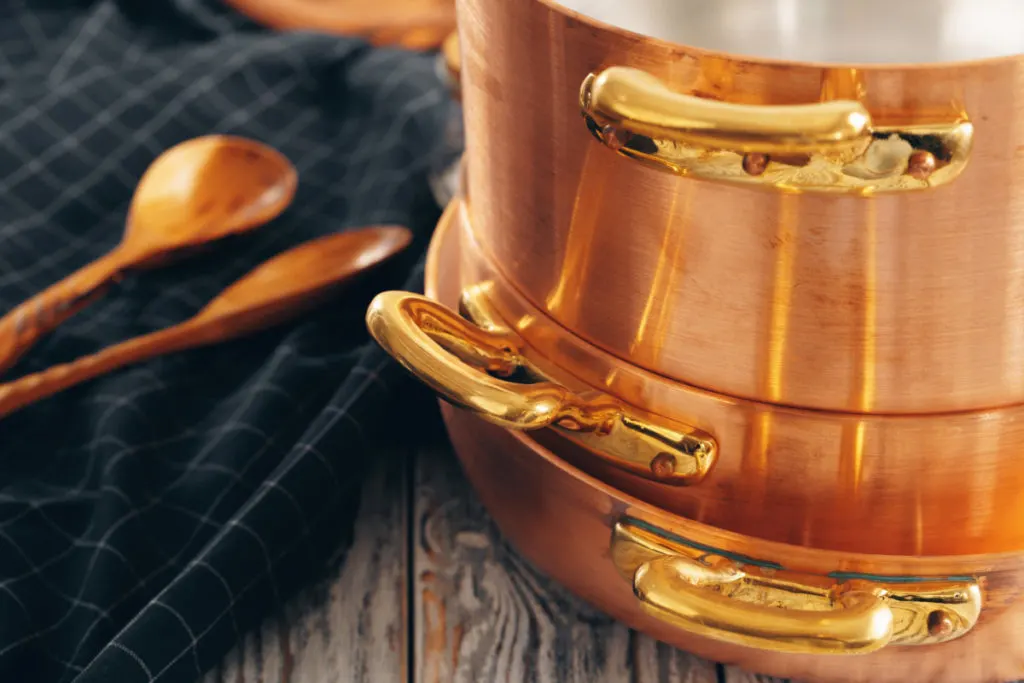
Hmm, I wonder if they’d let me clean the statue of liberty with ketchup. “Give me your tired, your poo…”
Better not.
6 Ways to Clean Brass With Everyday Household Items
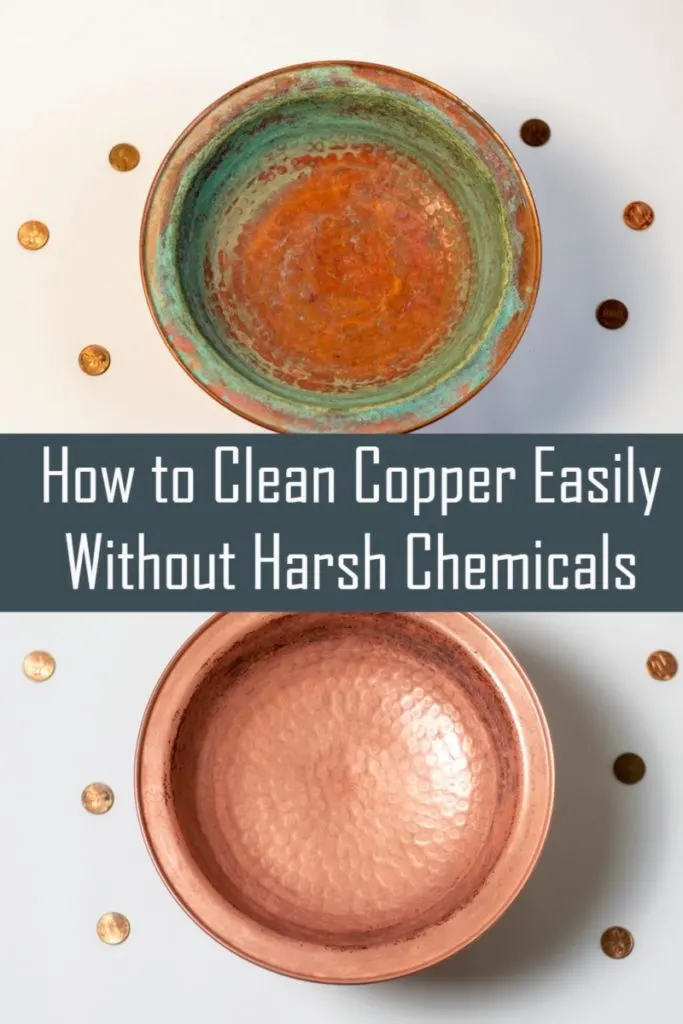

Get the famous Rural Sprout newsletter delivered to your inbox.
Including Sunday musings from our editor, Tracey, as well as “What’s Up Wednesday” our roundup of what’s in season and new article updates and alerts.


